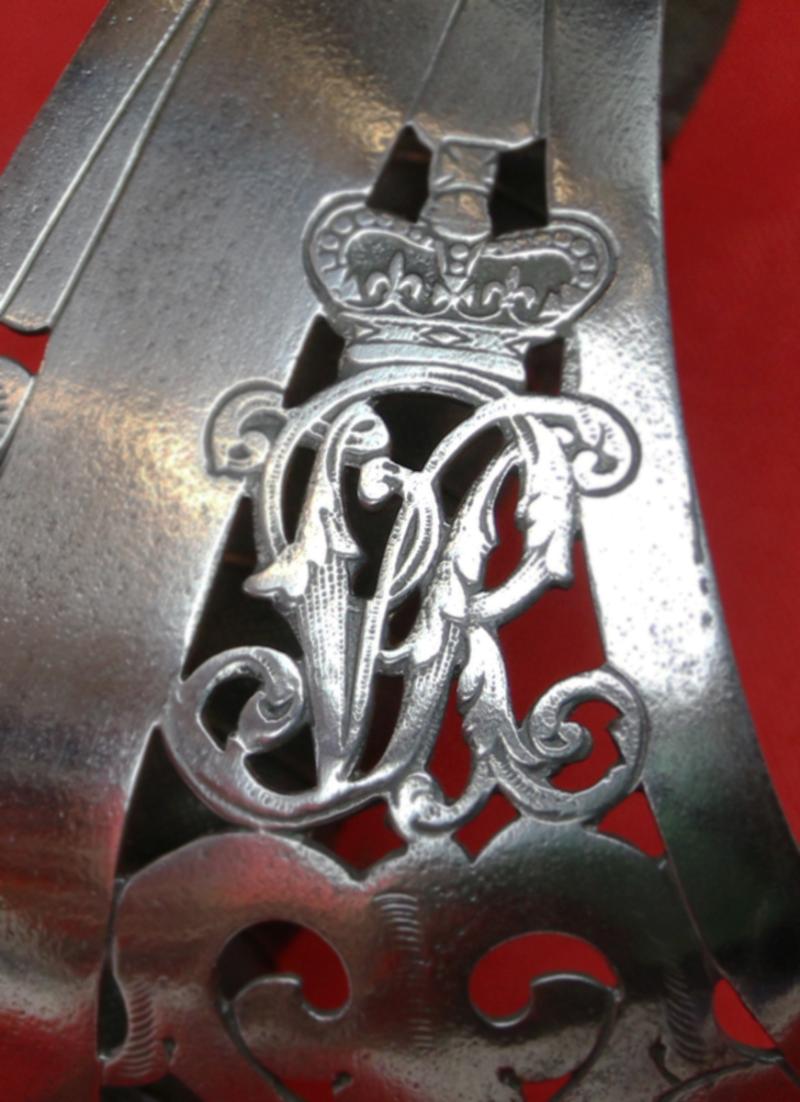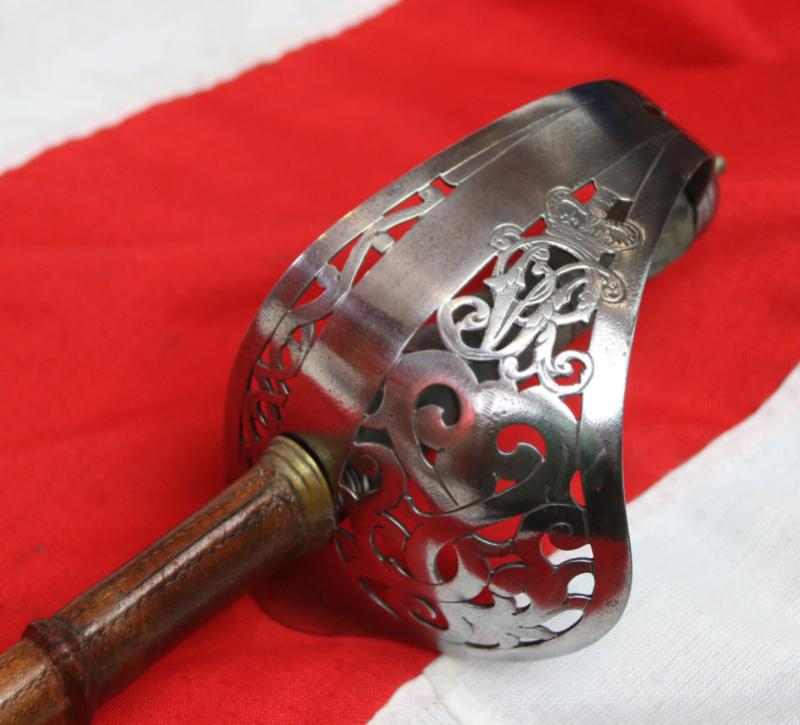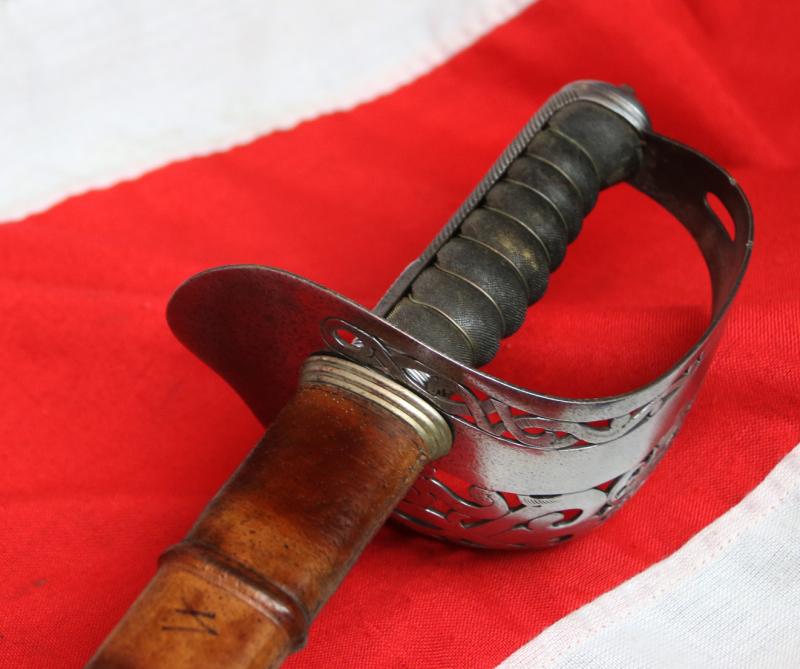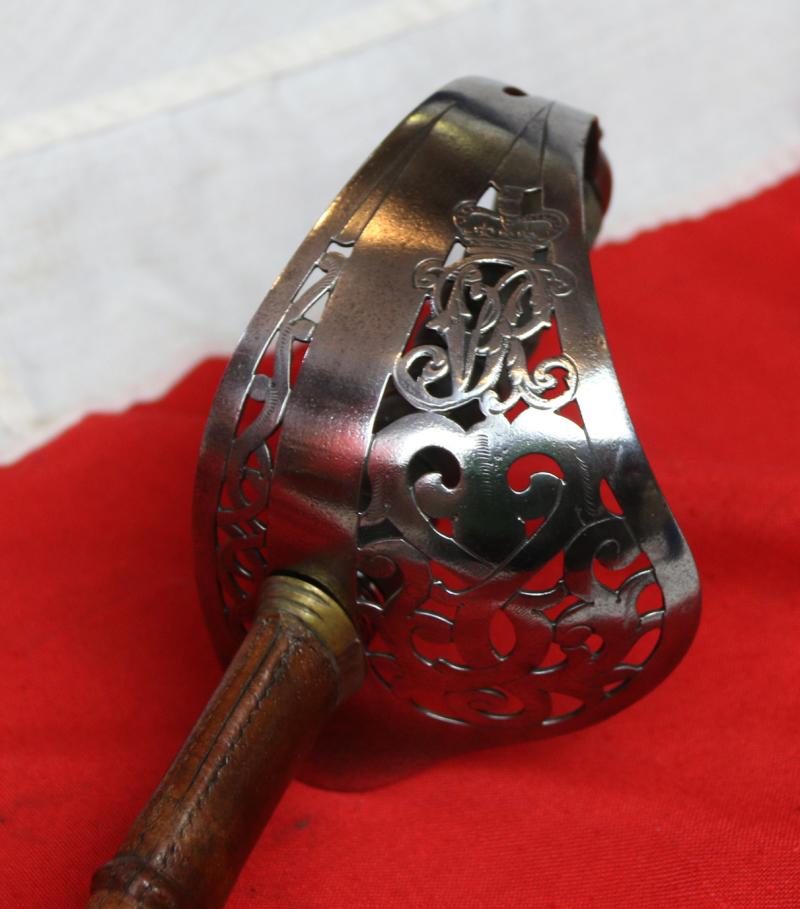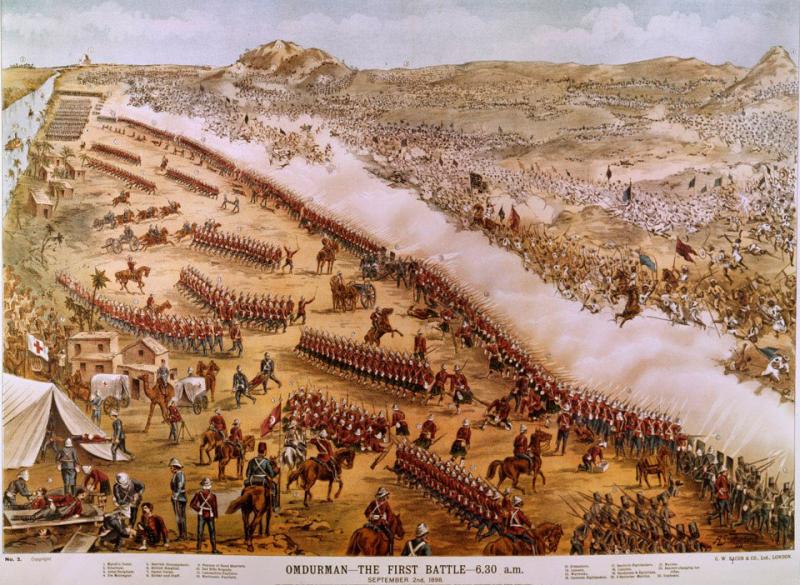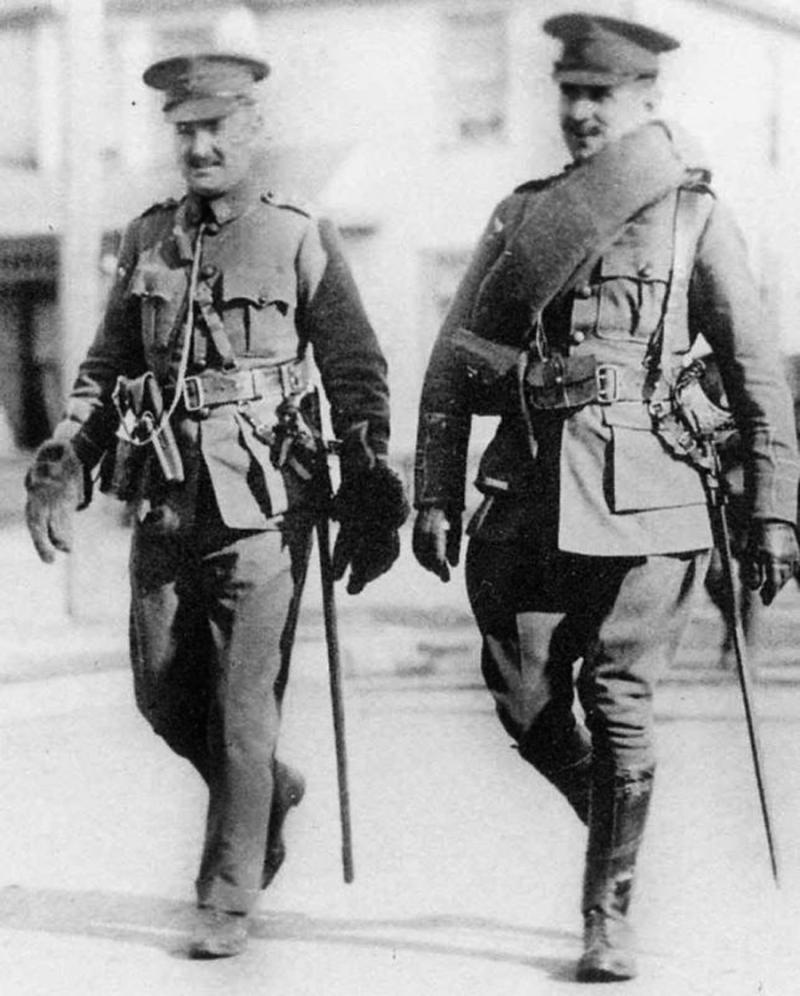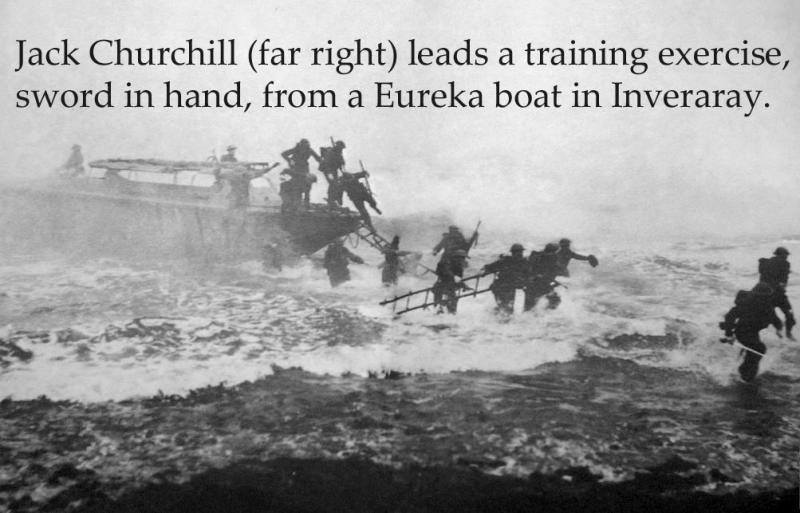A Scarce Victorian 1895 Pattern British Infantry Officer's Sword, With Field Service Scabbard. Used At The Battle of Omdurman, Through WW1 & Into WW2. Reports From Its Use, The 1895 'New Pattern' Were Very Positive In Its Use In Combat At Omdurman
This infantry officer's sword, of regulation pattern, with its Field Service leather covered wooden scabbard, was used in combat service in the The Battle of Omdurman. Then continually, in the following 20th century, in the two world wars. It is the rarest pattern of its type of infantry officer's sword, that was made in 1895 for just two years before the pattern was slightly altered at the half basket. The 1895 had a sharp edge in the inner bowl that used to wear when it rubbed against the officer's uniforms, this was changed by creating a small curl at that inner edge in 1897, and the pattern then titled the 1897 regulation pattern
Omdurman was fought on September 2, 1898, and was a decisive victory for the Anglo-Egyptian forces led by General Kitchener against the Sudanese Mahdist army commanded by the Khalifa Abdallahi ibn Muhammad.
This battle marked the culmination of the Anglo-Egyptian reconquest of Sudan and effectively ended the Mahdist state.
The blade is straight and symmetrical in shape about both its longitudinal axes. The thick blade has a deep central fuller on each side and is rounded on both its edge and back towards the hilt, giving a “dumbbell” or “girder” cross section. Through a gradual transition, the blade becomes double edged towards the tip, and the last 17 inches were sharpened when on active service. The blade ends in a sharp spear point.
The guard is a three-quarter basket of pressed, plated steel. It is decorated with a pierced scroll-work pattern and had the royal cypher of the reigning monarch set over the lower knuckle bow. In this case it is VR for Queen Victoria.
The 1895 regulation pattern Infantry officer's sword was slightly improved after two years with a small rim fold in the half basket in 1897, and has thus remained unchanged to the present day.
By the time of its introduction, the sword was of somewhat limited use on the battlefield against rapid-firing rifles, machine guns and long-range artillery. However, the new sword was regarded, when needed, as a very effective fighting weapon. Reports from the Sudan, where this sword was used in close-quarters fighting, during the Reconquest of the Sudan 1896-99, were highly positive.
Field Marshal Montgomery advanced into battle with his 1897 Pattern drawn during a counter offensive in the First World War. The actual sword he carried is exhibited in the Imperial War Museum, London.
One of the famous British officer's of WW2, who was a devoted exponent of hand to hand sword combat, using his sword in battle, was infantry officer 'Mad' Jack Churchill.
After fighting at Dunkirk, he volunteered for the Commandos. On one occasion, a general who had commented on his weaponry, Churchill is said to have replied "Any officer who goes into action without his sword is improperly dressed."
Very bright polish with traces of old polished out light pitting throughout. Small leather chape lacking from the base of the scabbard
Code: 25870
475.00 GBP



